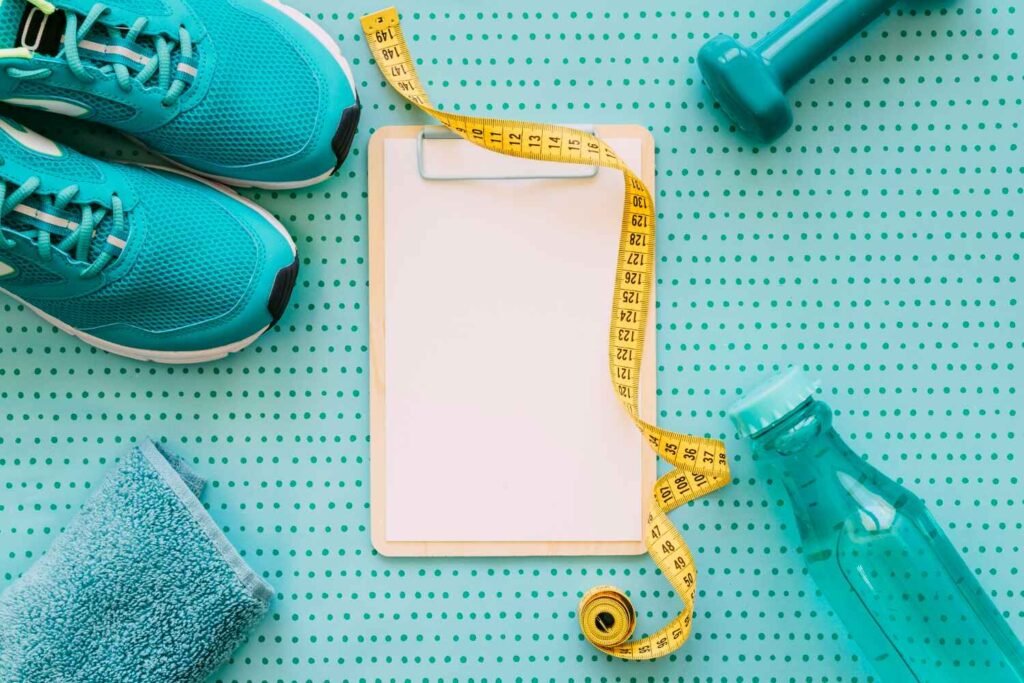
In the quest for weight loss, the internet is full of quick fixes, miracle diets, and misleading promises. However, true, sustainable weight loss requires a thoughtful approach based on science and healthy habits. Below are the top weight loss strategies that actually work and promote long-term success.
1. Prioritize Whole, Nutrient-Dense Foods
One of the most effective ways to lose weight is to focus on whole, unprocessed foods. This approach helps reduce calorie intake without the need to obsess over portion sizes. When you fill your plate with fruits, vegetables, lean proteins, and whole grains, you automatically reduce the space for calorie-dense processed foods that can sabotage your weight loss goals.
Whole foods, such as leafy greens, fruits, legumes, and whole grains, are nutrient-dense and low in calories. They are packed with vitamins, minerals, and fiber, which can help you feel full and satisfied without overeating. Fiber, in particular, plays a key role in weight loss by slowing digestion and keeping you full for longer periods. This means you’re less likely to reach for unhealthy snacks or overeat at your next meal.
Incorporating foods like spinach, broccoli, beans, quinoa, and lean proteins like chicken or fish into your diet can make a big difference. Not only do these foods help in weight loss, but they also improve overall health by providing essential nutrients that your body needs to function optimally.
2. Focus on Protein Intake
Protein is a crucial macronutrient when it comes to weight loss. It plays a significant role in preserving lean muscle mass, which in turn boosts metabolism. When you increase your protein intake, your body uses more energy to digest it compared to fats and carbohydrates. This is known as the “thermic effect of food,” where protein burns more calories during digestion than other nutrients.
Eating protein-rich foods like eggs, chicken, turkey, tofu, and legumes also helps reduce hunger hormones while increasing satiety hormones. This combination makes it easier to control your portions and avoid overeating. A common mistake people make is cutting calories too drastically, which can lead to muscle loss. By ensuring you get enough protein, you can preserve muscle mass while losing fat.
Aim to include a source of lean protein in every meal. Whether it’s a breakfast omelet packed with veggies and eggs, or a lunch salad topped with grilled chicken, protein will help keep you feeling full and energized throughout the day.
3. Stay Hydrated Throughout the Day
Drinking water is often overlooked in weight loss discussions, but it plays a vital role in controlling hunger and boosting metabolism. Many people mistake thirst for hunger, leading to unnecessary snacking or overeating. Staying hydrated helps you differentiate between true hunger and thirst, reducing the likelihood of consuming extra calories.
Studies show that drinking water before meals can significantly reduce calorie intake, helping you feel full faster. Water is also a natural appetite suppressant. When you drink enough water throughout the day, it boosts your metabolism, aids digestion, and helps your body break down fat more effectively.
Aim to drink at least 8 glasses of water a day, and even more if you’re physically active. If plain water doesn’t appeal to you, consider adding slices of citrus fruits or cucumbers for flavor. Another way to stay hydrated is by consuming foods with high water content, such as cucumbers, melons, and oranges.
4. Eat Regular, Balanced Meals
Skipping meals or going for long periods without eating can backfire on your weight loss efforts. When you don’t eat regularly, your blood sugar levels drop, which can lead to cravings for sugary or high-calorie foods. Additionally, prolonged hunger often results in overeating at your next meal, undoing any calorie deficit you may have achieved.
To avoid these pitfalls, aim to eat small, balanced meals every three to four hours. This strategy helps maintain steady blood sugar levels and prevents the energy crashes that lead to unhealthy snacking. Each meal should include a balance of protein, healthy fats, and complex carbohydrates, ensuring you get all the nutrients your body needs to function at its best.
For example, a healthy breakfast could consist of oatmeal topped with berries and nuts, while a balanced lunch might include a quinoa salad with grilled chicken and a variety of vegetables. These nutrient-rich meals provide sustained energy and keep you feeling full until your next meal.
5. Get Quality Sleep
Sleep is one of the most underrated factors in weight loss. Lack of sleep disrupts the hormones that control hunger and appetite, making it more difficult to stick to a healthy eating plan. When you don’t get enough sleep, your body produces more ghrelin (the hunger hormone) and less leptin (the hormone that signals fullness), which leads to increased cravings and overeating.
Studies have shown that people who get less than seven hours of sleep per night are more likely to struggle with weight loss. Poor sleep also affects your body’s ability to process carbohydrates, leading to insulin resistance and fat storage. To optimize weight loss, aim for at least 7 to 9 hours of quality sleep each night.
Creating a bedtime routine can help improve your sleep quality. Avoid screens (phones, TVs, computers) at least an hour before bed, and consider practicing relaxation techniques like meditation or reading a book to wind down.
6. Incorporate Regular Exercise
While diet is the most important factor in weight loss, exercise plays a key role in accelerating fat loss and preserving muscle mass. Regular physical activity not only burns calories but also improves your overall health and fitness levels. When combined with a healthy diet, exercise helps you achieve a calorie deficit, which is essential for weight loss.
The most effective weight loss programs combine both aerobic exercises (such as walking, running, or cycling) with strength training (such as weightlifting or resistance exercises). Aerobic exercises burn fat, while strength training builds muscle, which in turn increases your resting metabolic rate. The more muscle you have, the more calories you burn, even at rest.
If you’re new to exercise, start with simple activities like walking or biking for 30 minutes a day. As you become more comfortable, add strength training exercises like squats, lunges, and push-ups to build muscle and improve your fitness levels. The key is to find physical activities that you enjoy so you’re more likely to stick with them long-term.
7. Cut Back on Processed Foods
Processed foods are often loaded with added sugars, unhealthy fats, and excess salt—all of which can contribute to weight gain. These foods are typically high in calories but low in essential nutrients, leaving you unsatisfied and more likely to overeat.
Switching to whole, minimally processed foods can help you reduce your overall calorie intake while providing the nutrients your body needs. Start by cutting out sugary drinks, packaged snacks, and fast food, and replace them with healthier alternatives like water, nuts, seeds, and fresh fruits.
Making these changes may require some planning, but the benefits are worth it. Cooking meals at home using whole ingredients allows you to control portion sizes and ensure that you’re eating nutritious, low-calorie foods.
8. Practice Mindful Eating
Mindful eating is the practice of being present and fully engaged during meals. Instead of eating while distracted (like watching TV or scrolling through your phone), focus on savoring each bite, paying attention to the flavors, textures, and smells of your food. This practice helps you become more aware of your hunger and fullness cues, preventing overeating.
Eating slowly and mindfully allows your brain to catch up with your stomach, giving it enough time to signal when you’re full. Studies have shown that people who practice mindful eating are more likely to eat less and make healthier food choices.
One simple way to incorporate mindful eating is to sit down at a table and eliminate distractions during meals. Focus on the experience of eating, and stop when you feel satisfied rather than stuffed.
9. Manage Stress
Stress is a major contributor to weight gain, particularly around the abdominal area. When you’re stressed, your body releases cortisol, a hormone that triggers fat storage and increases hunger, particularly for high-calorie, sugary foods. This can lead to emotional eating, where you turn to food for comfort rather than hunger.
To prevent stress from derailing your weight loss efforts, find healthy ways to manage it. Practices like yoga, meditation, deep breathing exercises, or even spending time outdoors can help reduce stress levels. Regular physical activity is also an excellent way to manage stress and boost mood, making it easier to stay on track with your weight loss goals.
10. Set Realistic Goals and Track Your Progress
Setting specific, achievable goals can keep you motivated and on track with your weight loss journey. Instead of setting broad goals like “lose weight,” break them down into smaller, more manageable milestones. For example, aim to lose 5 pounds over the next month by making small changes to your diet and exercise routine.
Tracking your progress is also crucial for staying motivated. Keep a journal of what you eat, how much you exercise, and how you feel throughout the process. Celebrate your successes, no matter how small, and use any setbacks as learning opportunities to adjust your plan moving forward.
11. Stay Consistent, Not Perfect
Weight loss is not about being perfect. It’s about making consistent, sustainable changes that you can maintain over time. Instead of aiming for perfection, focus on progress. If you slip up and have a cheat meal or skip a workout, don’t beat yourself up. Get back on track as soon as possible and keep moving forward.
Consistency is key to long-term weight loss success. By building healthy habits gradually and sticking to them, you’ll be more likely to reach your goals and maintain your weight loss over time.
Conclusion
Losing weight is a journey that requires patience, commitment, and a focus on sustainable changes. By prioritizing whole foods, staying hydrated Losing weight requires a combination of science-backed strategies and consistency. Here’s a detailed guide to the most effective weight loss strategies that actually work, allowing for sustainable and long-term results.



